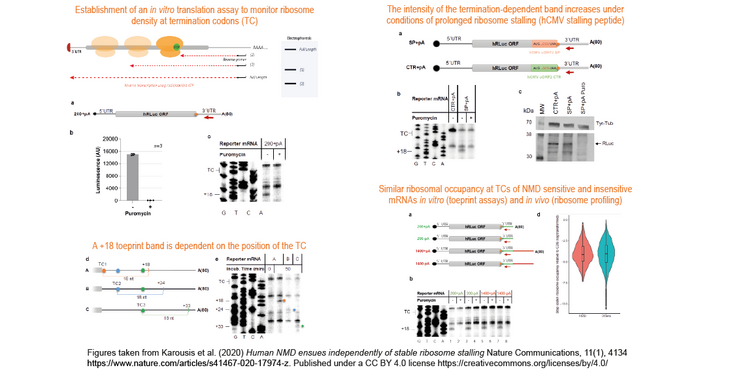Nonsense-mediated mRNA decay (NMD) is a cellular RNA quality control pathway that erases faulty and regulates normal mRNAs. Previous work suggested that the stalling of ribosomes at termination codons elicits NMD, but now a publication from the Mühlemann lab challenges this model: Evangelos Karousis and colleagues established an in vitro toeprinting assay and show that NMD can occur independent of stable ribosome stalling at termination codons.
Abstract
Nonsense-mediated mRNA decay (NMD) is a translation-dependent RNA degradation pathway that is important for the elimination of faulty, and the regulation of normal, mRNAs. The molecular details of the early steps in NMD are not fully understood but previous work suggests that NMD activation occurs as a consequence of ribosome stalling at the termination codon (TC). To test this hypothesis, we established an in vitro translation-coupled toeprinting assay based on lysates from human cells that allows monitoring of ribosome occupancy at the TC of reporter mRNAs. In contrast to the prevailing NMD model, our in vitro system reveals similar ribosomal occupancy at the stop codons of NMD-sensitive and NMD-insensitive reporter mRNAs. Moreover, ribosome profiling reveals a similar density of ribosomes at the TC of endogenous NMD-sensitive and NMD-insensitive mRNAs in vivo. Together, these data show that NMD activation is not accompanied by stable stalling of ribosomes at TCs.
Read the Publication in Nature Communications (Open Access)
Title, Abstract and Figure from Karousis E.D. et al. (2020) Nature Communications, 11(1):4134 published under the CC BY 4.0 License.
